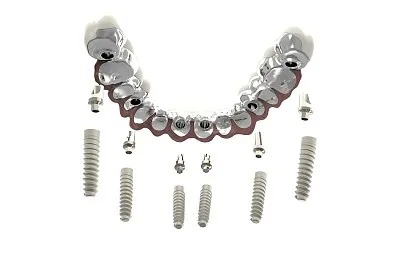Essential Guidelines for Ensuring Safe and Effective Dental Filling Procedures for Optimal Oral Health Care
Summary: Dental filling procedures are crucial for restoring teeth damaged by decay, injury, or wear. To ensure that these procedures are safe and effective, it is essential to adhere to guidelines that prioritize patient care, technique, and technology. This article delves into four key areas: the importance of pre-procedure assessments, adherence to safety protocols, the choice of filling materials, and post-procedure care. Each of these aspects plays a vital role in achieving optimal outcomes for dental fillings, contributing to better oral health care overall. By incorporating these guidelines, dental professionals can enhance their practice and ensure the well-being of their patients.
1. Importance of Pre-Procedure Assessments

Before any dental filling procedure, a comprehensive assessment is paramount. This involves a thorough examination of the patients dental condition, including X-rays to evaluate the extent of decay or damage. Proper diagnosis is critical for determining the most appropriate treatment course, ensuring the filling serves its purpose effectively.
In addition to a physical examination, understanding the patients medical history is vital. Factors such as allergies, existing health conditions, and previous dental experiences can significantly impact the choice of anesthesia and materials used. Engaging in an open dialogue with patients helps build trust and ensures a personalized approach to treatment.
Furthermore, pre-procedure assessments should also include discussing the procedure with the patient. Patients should be informed about what to expect, recovery time, and possible side effects. This transparency not only alleviates anxiety but also empowers patients to participate actively in their treatment plans.
2. Adherence to Safety Protocols
Safety protocols are essential in any medical procedure, including dental fillings. Ensuring a sterile environment is crucial to prevent infections. Dental professionals should adhere to strict infection control measures, including the use of gloves, masks, and sterilized instruments.
During the procedure, monitoring the patient’s vital signs ensures that any adverse reactions can be addressed promptly. An emergency kit should be readily available in the dental office to manage unforeseen complications such as allergic reactions or anxiety attacks during the procedure.
Moreover, it is equally important for dental practitioners to stay updated with safety guidelines and protocols established by relevant dental organizations. Continuous professional education and training foster a culture of safety, thereby elevating the quality of care provided to patients.
3. Choice of Filling Materials
The selection of appropriate filling materials is significantly influential in the longevity and effectiveness of dental restorations. Various materials such as amalgam, composite, and glass ionomer serve different purposes and are chosen based on the specific needs of the patients tooth location and condition.
Composite fillings, for example, are popular for their aesthetic appeal, blending seamlessly with natural teeth. However, they may not be as durable as amalgam fillings for posterior teeth, which bear more biting pressure. Therefore, dental professionals should assess the pros and cons of each material thoroughly before making a recommendation.
In recent years, advancements in dental technology have introduced new materials that enhance both the safety and effectiveness of fillings. For instance, bioactive materials not only fill cavities but also contribute to the repair and remineralization of the surrounding tooth structure. Staying abreast of these innovations allows dental practitioners to offer the best options to their patients.
4. Post-Procedure Care Guidelines
After a dental filling procedure, post-care is crucial for optimal healing and long-term success. Patients should receive clear instructions regarding care for their fillings, including information on managing sensitivity and pain relief options as needed.
Follow-up appointments should also be scheduled to monitor the filling and surrounding tooth structure. Regular check-ups help identify potential issues early, ensuring that any necessary interventions can be implemented swiftly, thereby avoiding more extensive procedures in the future.
Additionally, educating patients about proper oral hygiene practices contributes to the longevity of their fillings. Emphasizing the importance of regular brushing, flossing, and dental check-ups fosters better oral health and reduces the risk of further decay.
Summary:
In conclusion, ensuring safe and effective dental filling procedures is fundamental for optimal oral health care. By focusing on pre-procedure assessments, adherence to safety protocols, careful selection of filling materials, and thorough post-procedure care, dental professionals can facilitate better health outcomes for their patients. These essential guidelines serve as a framework for excellence in dental practice, reinforcing the commitment to quality care.
This article is compiled by Vickong Dental and the content is for reference only.



